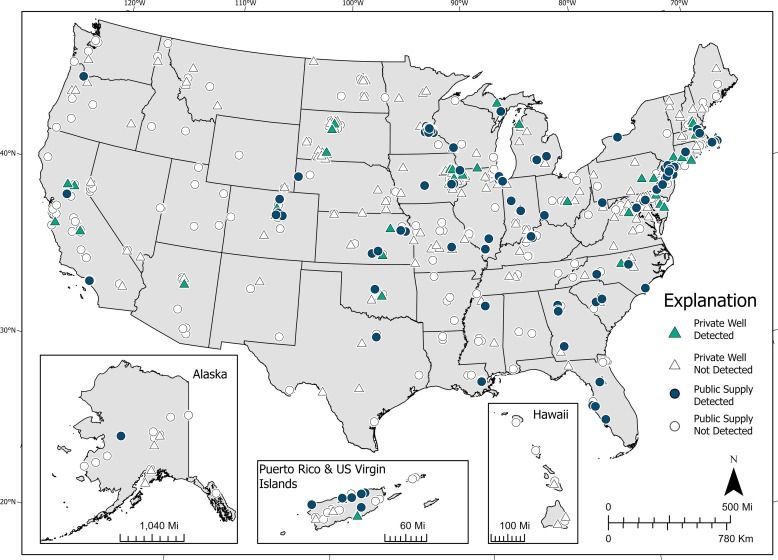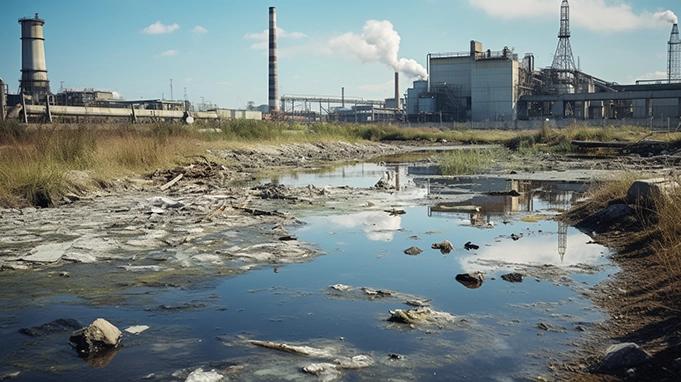PFAS Taint Nearly Half of US Water Supplies
In a nation celebrated for freedom, bravery, and ground-breaking innovations, a hidden hazard looms in a place least anticipated - your faucet. An invisible yet potent class of chemicals known as per- and polyfluoroalkyl substances (PFAS) - often called "forever chemicals" for their indomitable nature - are progressively infiltrating the water systems across the US.
Newly conducted studies have spotlighted the alarming pervasiveness of these detrimental chemicals in private and public water sources nationwide. The phrase "PFAS in drinking water" might come off as scientific terminology to most citizens, but it represents a pressing concern that demands public cognizance. A range of health complications, including various forms of cancer, developmental abnormalities in children, and immune system dysfunctions, are linked with these compounds. The public must grasp the health implications posed by these chemicals and adopt strategies to lessen exposure.
Imagine quenching your thirst on a sweltering day with a glass of water, oblivious that it might contain elements associated with cancer and other health issues. The most troubling aspect? These chemicals are emerging where they shouldn't - in our tap water, the primary water source for millions of US residents. It's time to scrutinize this under-discussed issue that threatens our health and well-being.
Why Study PFAS
In an era marked by escalating environmental awareness and mounting worries about pollution's effect on human health, comprehending the quality of our potable water is more crucial than ever.
Per- and polyfluoroalkyl substances, or PFAS, are synthetic chemicals extensively employed in various industrial and consumer goods for several decades. Due to their high heat, water, and oil resistance, these substances are prevalent in non-stick coatings, stain-resistant fabrics, and fire-extinguishing foams. Nevertheless, the broad usage of PFAS has sparked concerns about their potential repercussions on human health and the environment. Research has associated exposure to PFAS with several health risks, including cancer, immune system anomalies, and developmental problems in children. PFAS can enter our bodies by consuming tainted food and water, inhaling polluted air, or direct skin interaction with products containing PFAS. Given their persistence and omnipresence, PFAS have emerged as a substantial public health concern and a regulatory dilemma. Despite their ubiquitous utilization and the mounting research underscoring their potentially harmful effects, more data should be available regarding PFAS concentrations in household tap water, especially from private wells.

This is where the study we are discussing today steps in. The primary purpose of this research conducted by the USGS Ecosystems Mission Area Environmental Health Program was to undertake a comprehensive assessment of PFAS exposure from drinking water in private wells and public supply systems across the United States. This investigation was designed to provide much-needed data on PFAS levels in residential tap water and compare human exposure levels in unregulated private wells versus regulated public supply systems. The researchers set out to better understand where, why, and to what extent these potentially harmful substances are present in our drinking water.
Examining The Study
In this groundbreaking national reconnaissance study, the team collected tap water samples from 716 locations across the United States between 2016 and 2021. Of these, 269 samples were from private wells, and 447 were from public water supplies. The researchers also carried out temporal sampling at three locations to study changes in PFAS concentrations. Temporal sampling involves capturing samples at various times to observe variations in PFAS concentrations over a specific period.
These water samples were analyzed in three independent laboratories to assess the concentration of PFAS. In total, the team looked for 17 PFAS compounds. Each water sample's PFAS profile was then compared with land use and potential source metrics to explore possible contamination sources.
To ensure their findings were as accurate as possible, the team employed a benchmark screening approach, a standardized method of identifying PFAS substances with the highest potential for human exposure risks when detected. They also analyzed the relationships between cumulative PFAS concentrations, the number of individual PFAS detected, potential sources of contamination, and land use information. However, they acknowledge that the low detection frequencies and higher detection limits for specific PFAS could have limited the establishment of corresponding relations.
Concerning Findings About US Water Sources

The researchers discovered that the number of individual PFAS detected in each water sample ranged from 1 to 9, with a median of 2. They found that at least one PFAS could be detected in about 45% of US drinking water samples. The detection probabilities varied spatially, and there was limited temporal variation in the concentrations and numbers of PFAS detected.
The three most commonly detected PFAS were PFBS, PFHxS, and PFOA, each found in approximately 15% of the samples.
Interestingly, the study found that PFAS profiles and estimated median cumulative concentrations across the US were similar among private wells and public-supply tap water. According to the benchmark screening approaches, the researchers concluded that potential human exposure risk was dominated by PFOS when they were detected.
The data generated from this research highlights the need for further assessments of the cumulative health risks of PFAS as a class and in combination with other co-occurring contaminants, especially in unmonitored private wells where information is limited or unavailable.
Moving Forward
The study reveals that PFAS contamination in tap water from private wells and public supply is a widespread issue in the US. The research found at least one PFAS in approximately 45% of US drinking water samples, indicating that a significant proportion of the population could be exposed to these potentially harmful chemicals.
The data suggest a need for increased monitoring and regulation, especially for private wells that are currently unregulated and generally unmonitored. It's a concerning issue as private well owners make up about 13–14% of the US population and often have limited access to information about their water quality.
Moreover, the study highlights the rapidly changing PFAS regulations in the US, as strict state and federal drinking-water guidelines have been established over the last 20 years. Despite this, the researchers underscore that there are currently no enforceable national drinking-water standards for PFAS in the US. This lack of regulation underlines the urgent need for more research into the potential health impacts of PFAS exposure, which can inform the development of comprehensive, enforceable drinking water standards.

